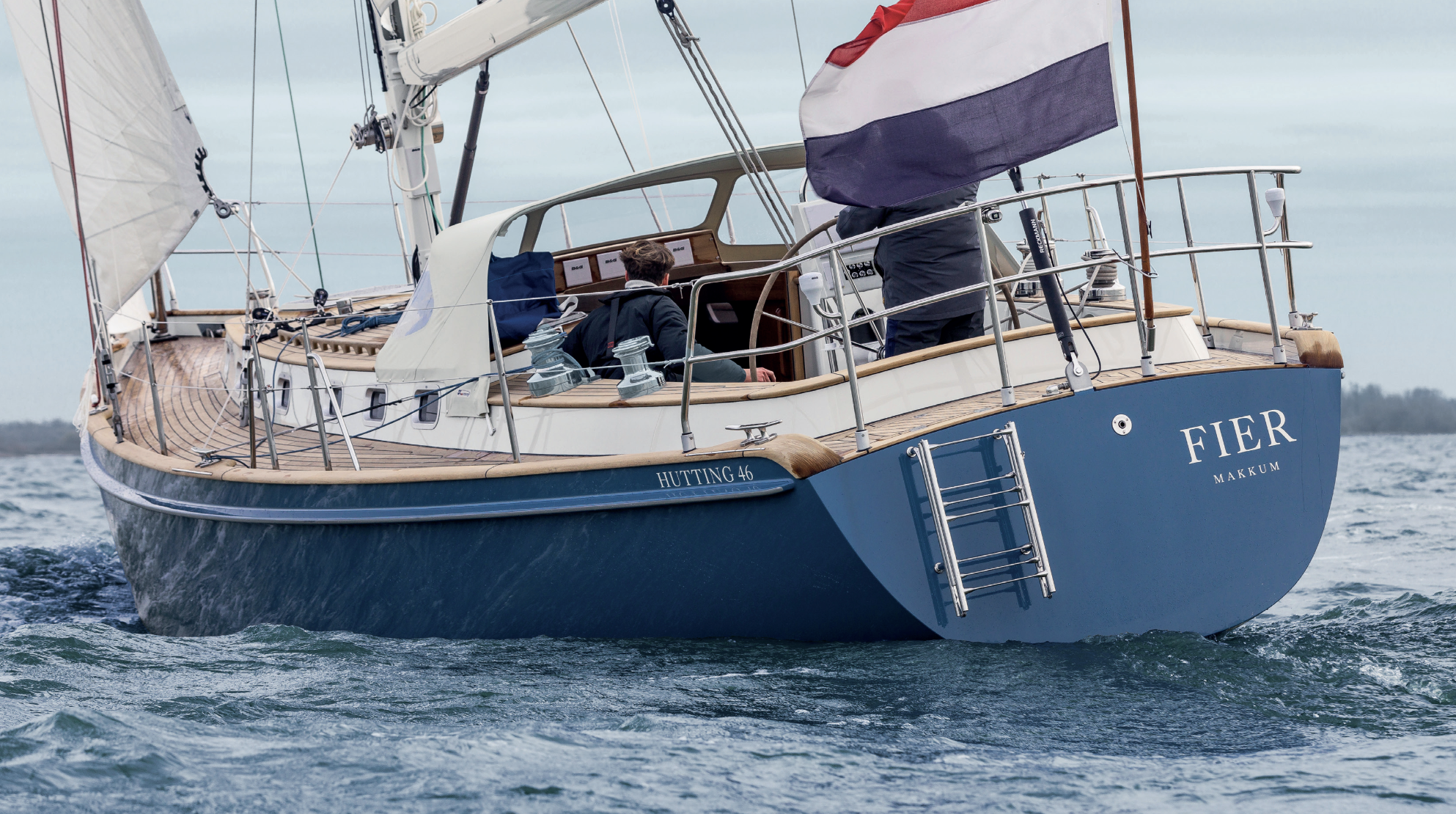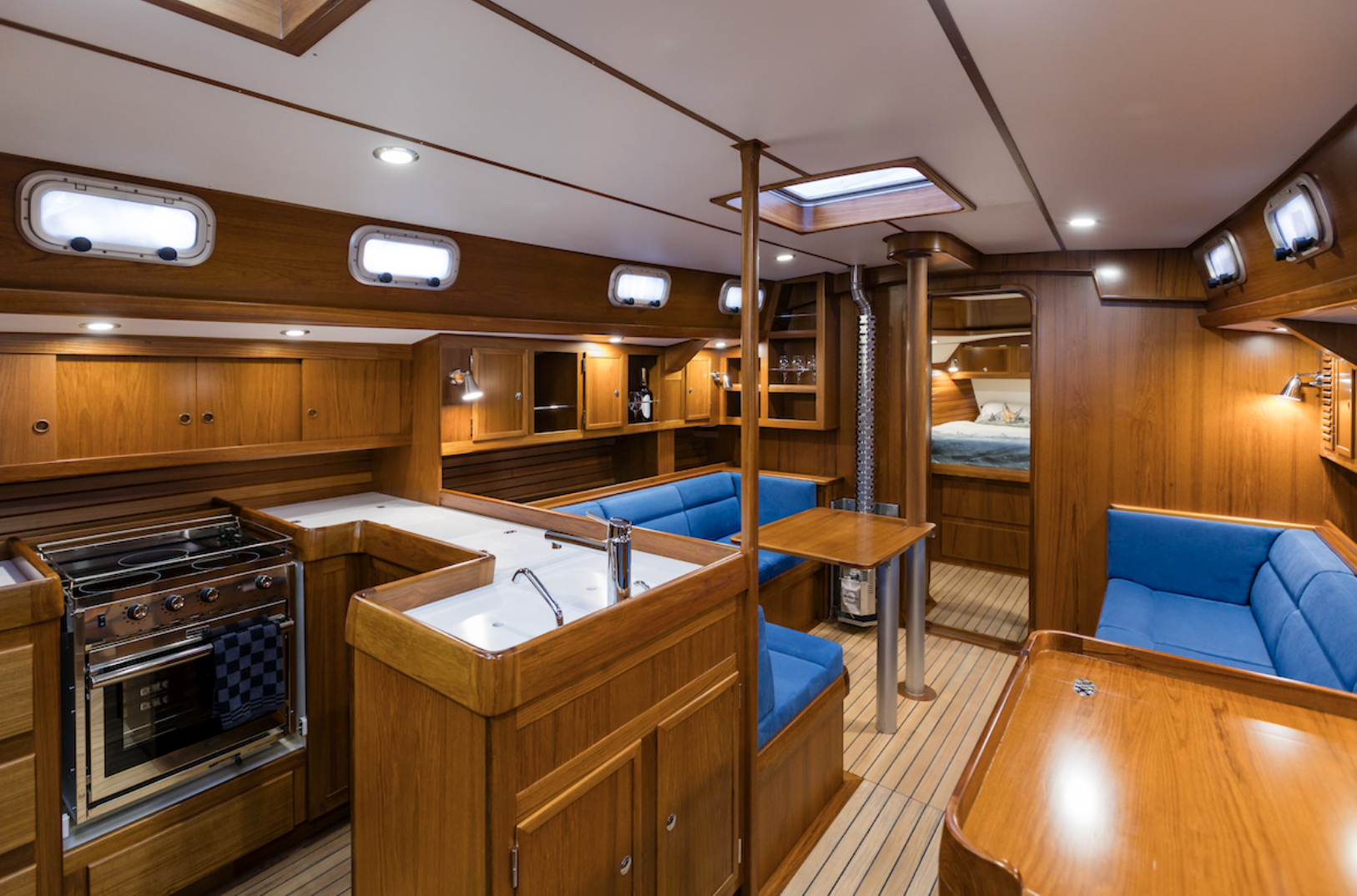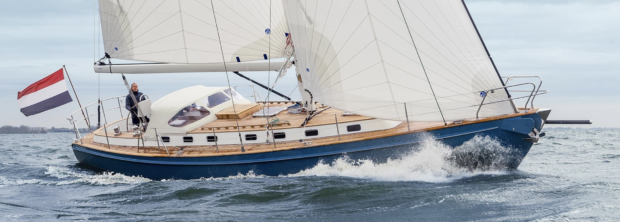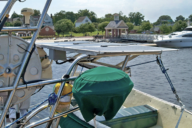Hutting Yachts is a boat building company from the old school. Based in Holland, the company was founded by Tjerk Hutting in 1975 and he is still chairman. Today, his daughter and two sons are deeply involved with running the company that offers five models of Hutting aluminum-hulled sloops, custom builds up 100 feet and a full service marine refit facility.
The Hutting 46, like all Hutting designs, is conservative by modern production-yacht standards. But, that is because the boat was conceived to be capable of sailing anywhere in the world, including the high latitudes and the remotest regions of Asia and Africa.
Her pleasantly curved bow, slightly springy sheer and flush transom –without a fold-down swim platform—harken back to cruising yachts from the 1980s. Think of boats like the Hallberg-Rassy 46, the Wauquiez 47 and the Oyster 49 and you’ll get the idea.
The 46 has two keel options, a shoal draft semi-fin with wings and a trim tab, or a deep traditional fin, which will be optimal for blue water sailing. The keel structures are welded and integral to the hull structural frame so there is keel-to-hull joint that could fail in a collision or grounding. The spade ruder has a moderately high aspect shape and should offer a positive feel at all angles. Because of the 46’s relatively narrow stern sections, the rudder should never stall, even at high heel angles.
Sailing performance, judging from the polars, should be good and consistent. For a couple day sailing, you can expect sailing speeds in the six to eight knot range, with the occasional 10 in following seas. Offshore, you would expect to average 150 miles a day for days on end. Because of the tight sheeting angles of the headsail, I’d expect the 46 to sail upwind at between 43 and 50 degrees of true wind angle.
The standard rig has a large in-mast furling mainsail and a self-tacking jib. This will be a cinch to handle for a lone watchkeeper, which is often the case for couples sailing without crew. The 46 has a retractable carbon bow sprint from which you can fly a cruising chute that will certainly help in light conditions.

He cockpit design is, again, a throwback to yachts of an earlier generation. The is no wide open transom, no double helms, no low coamings, but instead the 46 has a relatively small and deep cockpit, high coamings with ergonomically angled back rests, and full protection under the dodger. This is a cockpit in which you will feel secure in a seaway when waves are boarding unexpectedly, and water is surging down the side decks.
My only hesitation for the rig and cockpit set up is the main sheet leading to the middle of the cockpit where it could he a hazard in difficult sailing conditions. I’ve definitely become a fan of mid-boom sheeting on cruising boats. Perhaps a traveler forward of the dodger would fix this.
The 46 comes standard with two cabins and two heads. But, each boat is built to order and Hutting will create an interior that is entirely custom for each owner.

In the published layout, they show a U-shaped galley that will be secure and safe while on passage with plenty of surfaces to brace a hip or a knee while working with both hands. And they show the twin sinks on the boat’s centerline so they will drain on both tack when heeled over.
The fit and finish of the Hutting 46, like all of their boats, is highly-evolved, traditional yacht style with solid wood bulkheads, cabinets, drawers and doors all finished in subtle matte varnish. The interior is warm and comfortable and what you would expect from a builder of traditional, wholesome cruising yachts.
For many serious cruisers, an aluminum-hulled passage-maker with a secure cockpit, a simple-to-handle rig and teak decks has a powerful allure and something to aspire to.












